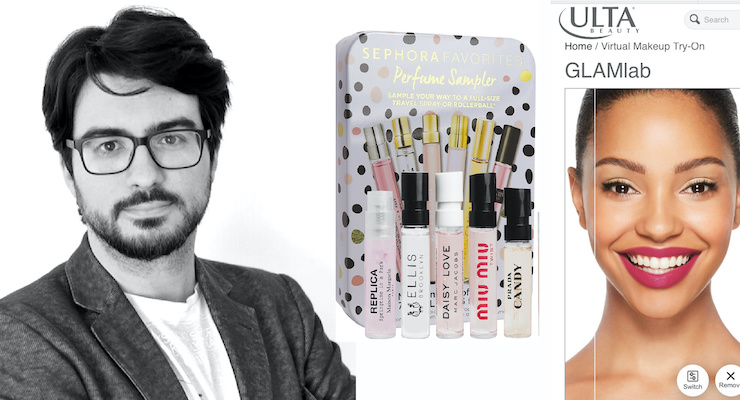Benjamin Scherpenbergs, Senior Manager at PFS11.30.20
The digital space has been making significant waves in the beauty industry for some time now, social media being the primary instigator. But nothing could have prepared the $532 billion global industry for the disruption brought on by Covid-19.
The industry response to the crisis has been overwhelmingly positive, but as the virus continues to spread and restrictions are starting to be imposed again, it’s clear that 2020 has brought about significant and permanent change to the industry.
To survive and thrive in this new era of Beauty, where what was once an extremely hands-on experience is suddenly fully distanced, brands and retailers need to adapt now.
Implement a Customer-First Approach
First and foremost, you must implement “customer-centricity” throughout your entire operation.Strive to know your customers better, understanding their needs, what motivates them to buy or not buy, and how they are interacting with your brand. Only when you understand your customers on a deeper level can you truly connect with them and develop a relationship with them that will enable you to stand out in the highly competitive online space.
AR Is Now A Necessity for Sampling
Product sampling in the way we are used to is unlikely to return anytime soon. With that in mind, AR functionality is taking center stage as brands and retailers seek digital alternatives to the try-on experience.As an example, Ulta Beauty’s GLAMlab try-on tool has experienced a 5X increase in usage since the pandemic began. Brands such as L’Oréal’s Lancôme have also started introducing their own virtual try-on tools.
AR technology gets smarter every year, with some tools even identifying skin tones and offering shade suggestions.
Customers may not be able to physically hold your products, but they are still able to experience them through AR. There are certainly benefits to the self-service approach that drives online orders. There is no clean up involved, no removing of product required before trying on another shade or color. The easier testing experience encourages customers to try more items, ideally leading to more purchases.
Train Customer Service Agents
Leverage your customer service channel to support customers as they embrace self-service online.By providing in-depth product training, you can equip your agents to support customers in product selection and take full advantage of up-selling opportunities.
Social Listening is Also Critical
Social listening is also critical at this time as frustrated customers are taking to public platforms to express disappointment in brands or retailers.Be appeasement-centric during this volatile time and provide additional empathy training for agents to ensure angry customers feel that their complaints are heard. By monitoring social platforms, you can act quickly to appease customers and minimize repercussions to your brand’s image.
Samples are More Important Now
Product samples have long been a part of the beauty counter strategy. This approach continues to be key during the pandemic. While AR and other alternate approaches to shopping are improving, at the end of the day, you can’t smell or feel a product through your device.For fragrances, one of the worst performing categories during the pandemic, and related products, there just isn’t an equal alternative to actually smelling a scent. Brands are including more samples with orders and running more promotions that allow customers to try more products for free.
Since 2018 L’Oréal has worked with Sampler, a product sampling platform sending a mix of samples to customers based on their preferences.
Regarding their experience with Sampler during this time, L’Oréal’s marketing and innovation director Othman Bennis says, “Sending samples by mail in a qualitative, targeted way is a wonderful tool to generate advocacy and positive net sentiment from users.”
Stand Out with Subscription Boxes
Subscription boxes offer another opportunity to allow customers to try new products.Subscription boxes are certainly not a new thing. In fact, pre-pandemic, Multichannel Merchant predicted that 75% of DTC organizations will be offering subscription services by 2023. Many beauty brands, particularly high-end brands and startups are embracing subscription boxes as a way to differentiate themselves in a crowded market and get their products in the hands of customers.
Subscription boxes allow you to interact with customers and build a bond with them that leads to increased loyalty.
Brands can elevate the experience by choosing packaging that is representative of opening a gift and including marketing inserts that highlight the benefits of the products and provide instructions for use.
You can also direct customers to specific webpages where they can learn more and easily purchase the products. These simple additions provide a personal touch that encourages future purchases.
Transparency and Authenticity Matter
We recently conducted a consumer survey on sustainability which highlighted that the pandemic has made consumers even more aware of and concerned with the impact their shopping habits have on the environment.For example, three-quarters of consumers expect brands they shop to use recyclable packaging and 64% look for ethical and sustainable features when making purchases online. See more interesting results here.
As brands seek to become more customer-centric in this new era of beauty, sustainability is one area that cannot be ignored. In this difficult time, customers want to see that you care about more than just your brand.
In a recent panel discussion on how Covid-19 is changing the beauty industry, Christine White, director of social and content marketing at Ulta Beauty stated that retailers must, “dig deep and understand that authenticity, transparency [and] accessibility are going to be the things that are ultimately going to help brands and the industry really weather [the pandemic].”




























